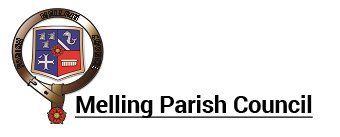Places of Interest
St Thomas Parish Church (C of E), Rock Lane
It was founded before 1603. An ancient preaching cross or rood has stood on the site of the church for centuries. A chapel mentioned in a deed of 1190 A.D., when land in Melling was held by the monks of Cockersand Abbey near Morecambe Bay. The present church of St. Thomas and the Holy Rood was built in 1835 it is in the early English style, and forms, from its elevated situation, a conspicuous object in the scenery. It replaced an earlier church of the Holy Rood dating from about 1195. The chapelry is elevated, and from the churchyard it has panoramic views including Liverpool and in the distance the Welsh mountains.
St Kentigern Roman Catholic Chruch
The church was built in 1897, as a chapel of ease, to be served from St George’s Maghull. St. Kentigern or ‘Mungo’ (the nickname meaning ‘well loved’ is found in Scotland and the Isle of Man, for the same Kentigern) was a 6th century monk who founded the monastery where the modern city of Glasgow stands.
The Tithebarn
The Tithebarn has been a part of life in Melling since the mid 18th century when it was built to house the tithe which was due to the Rector of Halsall.
Originally there would have been two great barn doorways facing each other which were constructed to enable hay carts to be driven into the barn. At harvest time the corn was brought to the barn and stored in the side bays. During the winter months it was gradually threshed by flailing on the hard central floor and then winnowed by being tossed in the draught between the open doorways.
Eventually it was used as a coach house when the adjacent Vicarage was built in the 19th century and after the 1914 -18 war it was rejuvenated by local labour and used as a Parish Room.
In 1974 the Tithebarn was modernised and nowadays it serves as St Thomas' church hall and community centre, still serving the community nearly 200 years on.
Melling Church School
The school appears to have been founded built in 1844 and is described as a neat school, erected corresponding in style to the church, the old school then being used as a dwelling for the master and mistress. The school taught 25 free children and was allowed to take boarders.
The Delph
This area was once a quarry from which high quality sandstone was removed for building projects probably including the present St Thomas Church situated opposite The Delph. In the early 20th century it was used as a rifle range and occasional recreation area but later began to be used as a landfill site.
From the mid 1970s the Parish Council, in conjunction with Sefton MBC, sought ways of improving the site but it did not prove possible to get effective ownership of the whole site until the early 1980’s. The conversion of the site to a wildflower meadow with public access was finally realised in 1988, with help from Landlife, the environmental charity which later went on to build the National Wildflower Centre in Court Hey Park, Knowsley. The Delph remains a successful example of creative conservation and has received visits from landscape professionals, some from distant shores. We are ensuring it has the management it deserves, and adding to a species compliment to ensure this area has a secure future.
The sandstone walls that border The Delph and Rock Lane probably date from the early 18th Century.
Wild flowers to look for are: Greater Knapweed, Yellow Rattle, Agrimony, Ox-eye daisy, Birdsfoot-Trefoil, Meadow Cranesbill and Wild Parsnip
Butterflies include: Red Admiral, Commas, Speckled Wood, Peacock, Small Skipper and Greater Burnet Moth
Birdlife includes: Goldfinches, Linnets, Tree Sparrows, Jays, Song Thrushes and Wrens.
